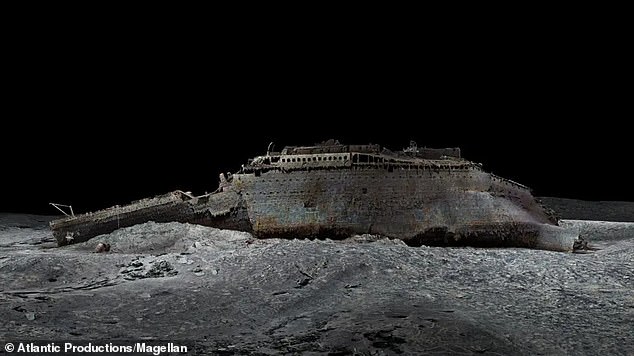
"3D Scans Unveil Titanic’s Final Hours as Iceberg Collision Rips Ship Apart in 1912"
New Digital Scans Reveal Titanic’s Tragic Final Moments in Unprecedented Detail
Over a century after the RMS Titanic sank in 1912, groundbreaking scans by deep-sea mapping company Magellan Ltd. have unveiled startling new details of the wreck, lying 12,500 feet below the Atlantic surface. Published by the BBC, these images offer fresh insights into the ship’s rapid demise and the bravery of its final crew.
Key Discoveries from the Deep
The scans reveal the boiler room near where the ship split in two. Concave boilers suggest they were still operational as icy water flooded in. Punctures "the size of A4 paper" along the hull sealed Titanic’s fate, causing it to sink in just 2 hours and 40 minutes.

The Titanic’s bow (front), remarkably preserved but buried in sediment.
A critical find was an open steam valve, indicating engineers led by Joseph Bell kept power flowing to lights and communications until the end. Their heroism bought crucial time for lifeboat deployments, saving hundreds.

Concave boilers in the damaged engine room, still operating during flooding.
How the "Unsinkable" Ship Met Its End
Research confirms the iceberg collision was a glancing blow, but it punctured six compartments. “Flooding through these small holes doomed the ship,” explained naval architect Simon Benson. The stern, torn apart during its plunge, now lies twisted on the ocean floor, while the bow remains eerily intact.

The mangled stern, damaged by impact with the seabed.
Heroism in the Dark
Joseph Bell and his team, shoveling coal to maintain power, perished but became unsung heroes. “They held chaos at bay,” said Titanic expert Parks Stephenson. Their efforts ensured lifeboats could evacuate, though only 706 of 2,224 passengers and crew survived.

Engineer Joseph Bell, whose team kept lights on as the ship sank.
A Race Against Time
The wreck, discovered in 1985, is deteriorating rapidly due to microbes and currents. Experts estimate it could vanish within 40 years. Recent scans aim to preserve its legacy digitally for future generations. A new documentary, Titanic: The Digital Resurrection, showcases these findings alongside a 3D reconstruction of the ship.
Final Resting Place
Titanic’s remains, split into bow and stern sections 2,600 feet apart, lie 350 nautical miles off Newfoundland, Canada. Debris fields scattered with artifacts—champagne bottles, shoes, and furniture—offer haunting glimpses of the tragedy.

The wreck site, now a protected memorial under international treaty.
Over a century later, Titanic’s story remains a testament to human ambition and sacrifice. These scans ensure its lessons—and heroes—won’t be forgotten.


